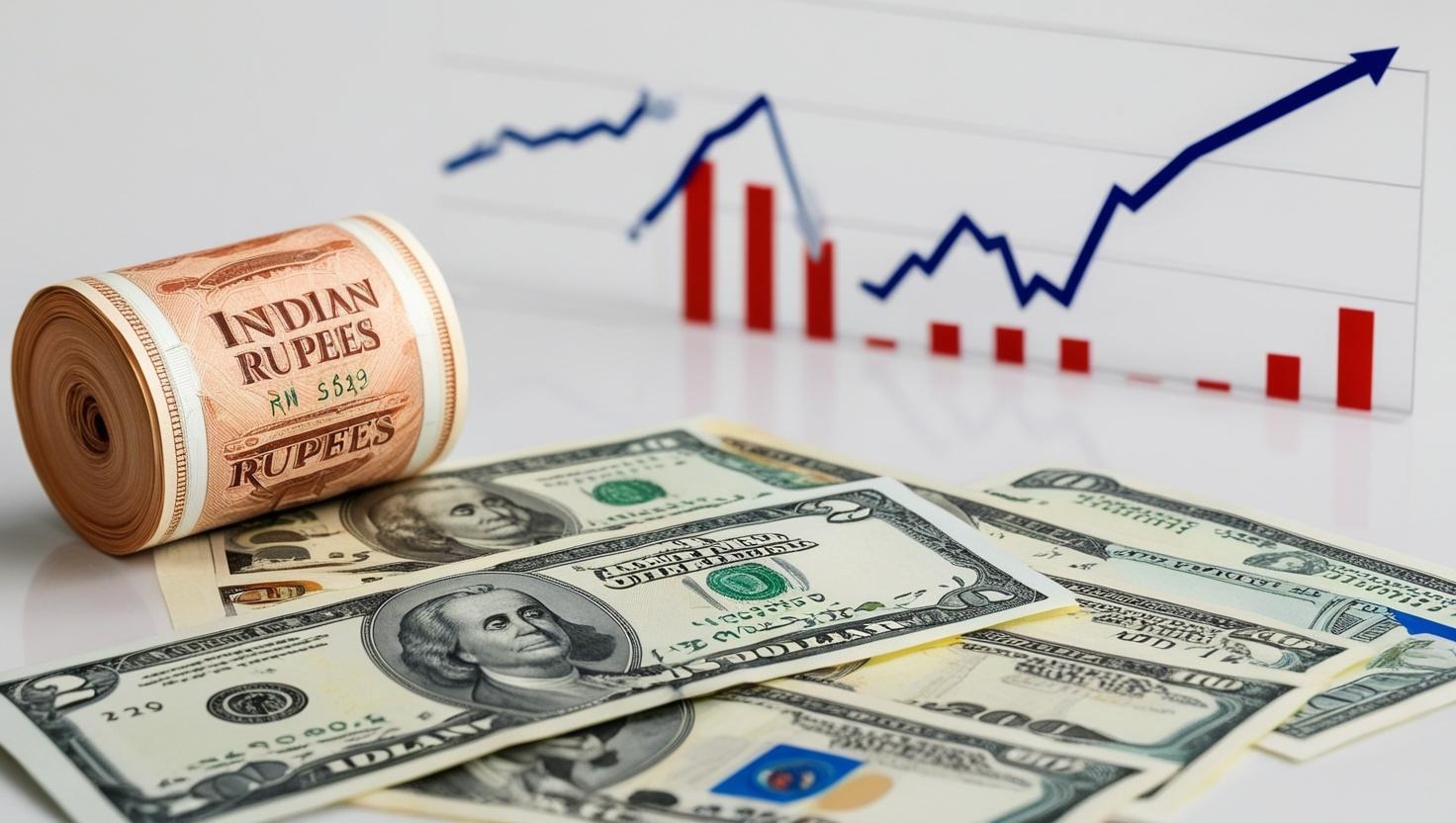Table of Contents
Why is the Rupee Losing Value?

The Indian rupee has dropped to its lowest-ever value of 87.95 against the US dollar. This means you’ll need more rupees to buy the same amount of goods from other countries. But why is this happening? Let’s break it down.
1. Problems in Global Trade
- The US has added extra taxes on steel and aluminum coming from other countries.
- This has made investors nervous about putting money into countries like India, leading to less investment and a weaker rupee.
2. Foreign Investors Taking Their Money Out
- Investors from other countries have removed about $10 billion from Indian markets.
- Higher interest rates in the US mean investors get better returns there, so they move their money out of India.
- When investors take money out, they exchange rupees for dollars, making the dollar stronger and the rupee weaker.
3. India’s Own Economic Struggles
- Slow Business Growth: Factories are producing less, and people are spending less money, slowing down the economy.
- Fewer Jobs: With fewer jobs available, people have less money to spend, which affects businesses.
- Rising Prices: The cost of essential items like food and fuel is increasing, making life more expensive for everyone.
How is This Affecting Daily Life?
When the rupee loses value, it affects everyone differently. Some people struggle, while others benefit.
1. Prices of Imported Goods are Going Up
| Item | What Happens? |
| Petrol & Diesel | More expensive since India buys most of its oil from other countries. |
| Electronics & Gadgets | Prices of phones, TVs, and laptops go up since they rely on imported parts. |
| Raw Materials | Factories need to pay more for imported materials, so prices of everyday items also rise. |
- Example: If you’re planning to buy a new smartphone, it may cost more because the parts are imported.
- Example: A cup of tea could become more expensive because fuel prices impact transport costs.
2. Impact on the Stock Market
- The Sensex and Nifty (big stock market indexes) have dropped because investors are being cautious.
- Companies that rely on exports, like Tata Steel and JSW Steel, are facing losses due to new US trade rules.
3. Rising Cost of Living
- With imported goods becoming expensive, families have to spend more on essentials.
- If inflation keeps going up, the Reserve Bank of India (RBI) might increase interest rates, which could make home loans and EMIs costlier.
What’s Next for the Rupee?
The future of the rupee depends on how India and the world respond. If problems continue, the rupee could fall further. Here’s what might happen:
1. Could the Rupee Lose More Value?
- If the US increases interest rates, more money may flow out of India.
- Oil prices and global conflicts could make things worse for the rupee.
2. Steps to Strengthen the Rupee
To make the rupee stronger, the government and RBI could:
- Bring in More Foreign Investment: Making India attractive for investors can stabilize the rupee.
- Support Indian Businesses: Helping exporters grow can bring more dollars into India.
- Control Inflation: Keeping prices stable ensures people can afford necessities.
- Invest in Renewable Energy: Reducing India’s dependence on oil can help avoid price shocks.
3. India’s Role in Global Trade
- If the US continues its strict trade policies, India will have to find new trading partners.
4. The Future of Digital Money
- India is considering a Digital Rupee to make transactions smoother and reduce dependency on cash.
What This Means for You
If the rupee keeps falling, life could get a little harder:
- Buying fuel, groceries, and electronics will cost more.
- Traveling abroad will be more expensive, as you’ll need more rupees for dollars.
- Interest rates may increase, making loans and EMIs pricier.
But it’s not all bad:
- If you work in the IT or export sector, your company may do better because Indian goods are now cheaper for other countries.
- More foreign businesses investing in India could create jobs and boost salaries over time.
Final Thoughts
The falling rupee is a mix of global and local issues. While businesses and families may face short-term struggles, the government and RBI are working on solutions. It’s important to stay informed and plan finances wisely. The next few months will be crucial in determining how strong India’s economy remains in a changing world.



























